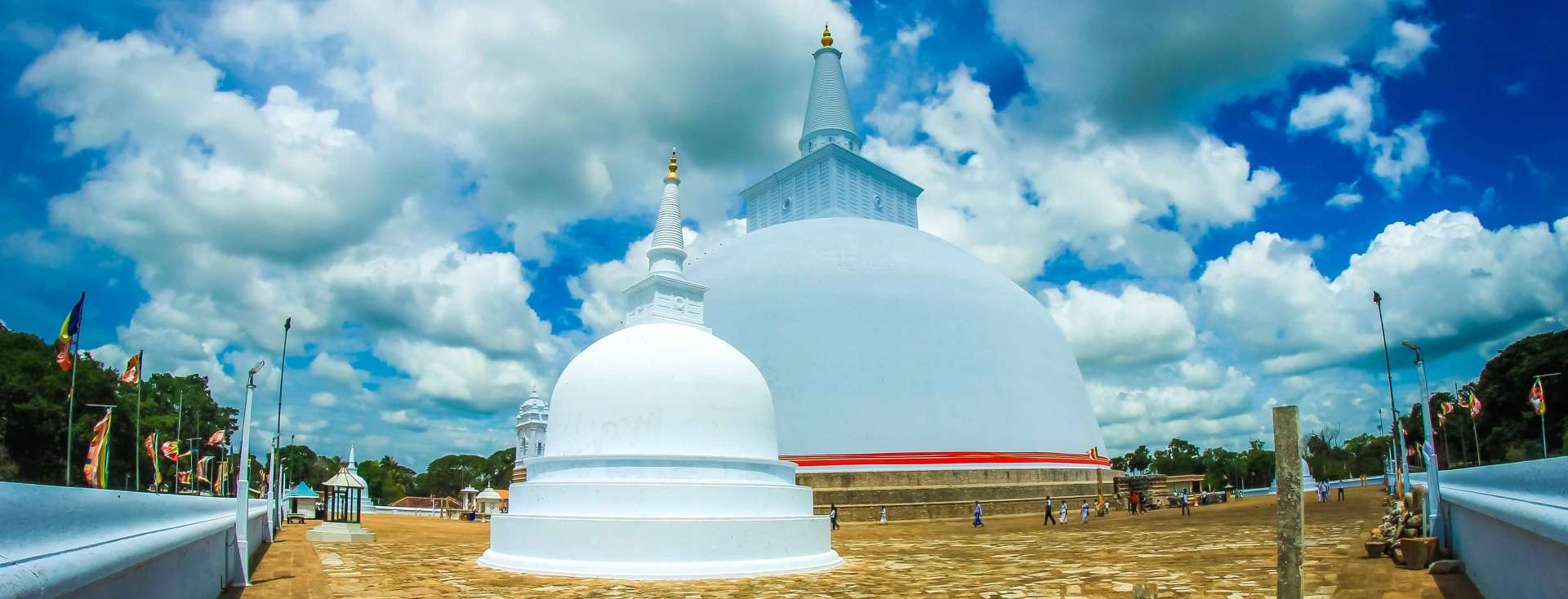When the where withal to build was thus brought together, he began the work of the Great Thupa on the full-moon day of the month of Vesak.
When he had ordered to take away the stone pillar the lord of the land had the place for the thupa dug out to a depth of seven to make it firm in every way.
Round stones that he commanded his soldiers to bring hither did he cause to be broken with hammers, and then did he, having knowledge of the right and the wrong ways, command that the crushed stone, to make the ground firmer, be stamped down by great elephants whose feet were bound with leather.
The fine clay that is to be found on the spot, for ever moist, where the heavenly Ganga falls down (upon the earth) (on a space) thirty yojanas (yodun) around, is called because of its fineness, `butter-clay.’
Samaneras who had overcome the asavas, (ashrawa) brought the clay hither from that place.
The king commanded that the clay be spread over the layer of stones and that bricks then be laid over the clay, over these a rough cement and over this cinnabar, and over this a network of iron, and over this sweet-scented marumba (sweet-scented clay) that was brought by the samaneras from the Himalaya.
Over this did the lord of the land command them to lay mountain-crystal.
Over the layer of mountain-crystal he had stones spread; everywhere throughout the work did the clay called butter-clay serve (as cement).
With resin of the kapittha-tree, (Divul/Woodapple tree) dissolved in sweetened water, the lord of chariots laid over the stones a sheet of copper eight inches thick, and over this, with arsenic dissolved in sesamum-oil (sesame seed-oil), (he laid) a sheet of silver seven inches thick.
When the king, glad at heart, had thus had preparation made upon the spot where the Great Thupa was to be built, he arranged, on the fourteenth day of the month of Esala, an assembly of the brotherhood of the bhikkhus, and spoke thus: `Tomorrow, venerable sirs, I shall lay the foundation-stone of the Great Cetiya. Then let our whole brotherhood assemble here, to the end that a festival may be held for the Buddha, mindful of the weal of the people; and let the people in festal array, with fragrant flowers and so forth, come tomorrow to the place where the Great Thupa will be built.’
He entrusted ministers with the adorning of the place of the cetiya.
Commanded by the lord of men, they, filled with deep reverence for the Sage (Buddha), adorned the place in manifold ways.
The whole city also and the streets leading thither did the king command to be adorned in manifold ways.
On the following morning he placed at the four gates of the city many barbers and servants for the bath and for cutting the-hair, clothes likewise and fragrant flowers and sweet foods (did) the king (place there) for his people’s good, he who rejoiced in the people’s welfare.
Taking, according to their wish, the things thus put before them, townsfolk and country-people went to the place of the thüpa.
The king supported, in order of their rank, by many ministers, richly clothed as befitted their office, surrounded by many dancers richly clothed like to celestial nymphs, (be himself) being clad in his state-raiment, attended by forty thousand men, while around him crashed the music (he being) glorious as the king of the gods; (Sak dewindu) in the evening he who had knowledge of fit and unfit places went to the place of the Great Thupa, delighting the people (with the sight)
A thousand and eight waggon-loads of clothes rolled in bundles did the king place in the midst, and on the four sides he had clothes heaped up in abundance; and moreover, he had honey, clarified butter (ghee), sugar (sugar cane jaggery) and so forth set (there) for the festival.







